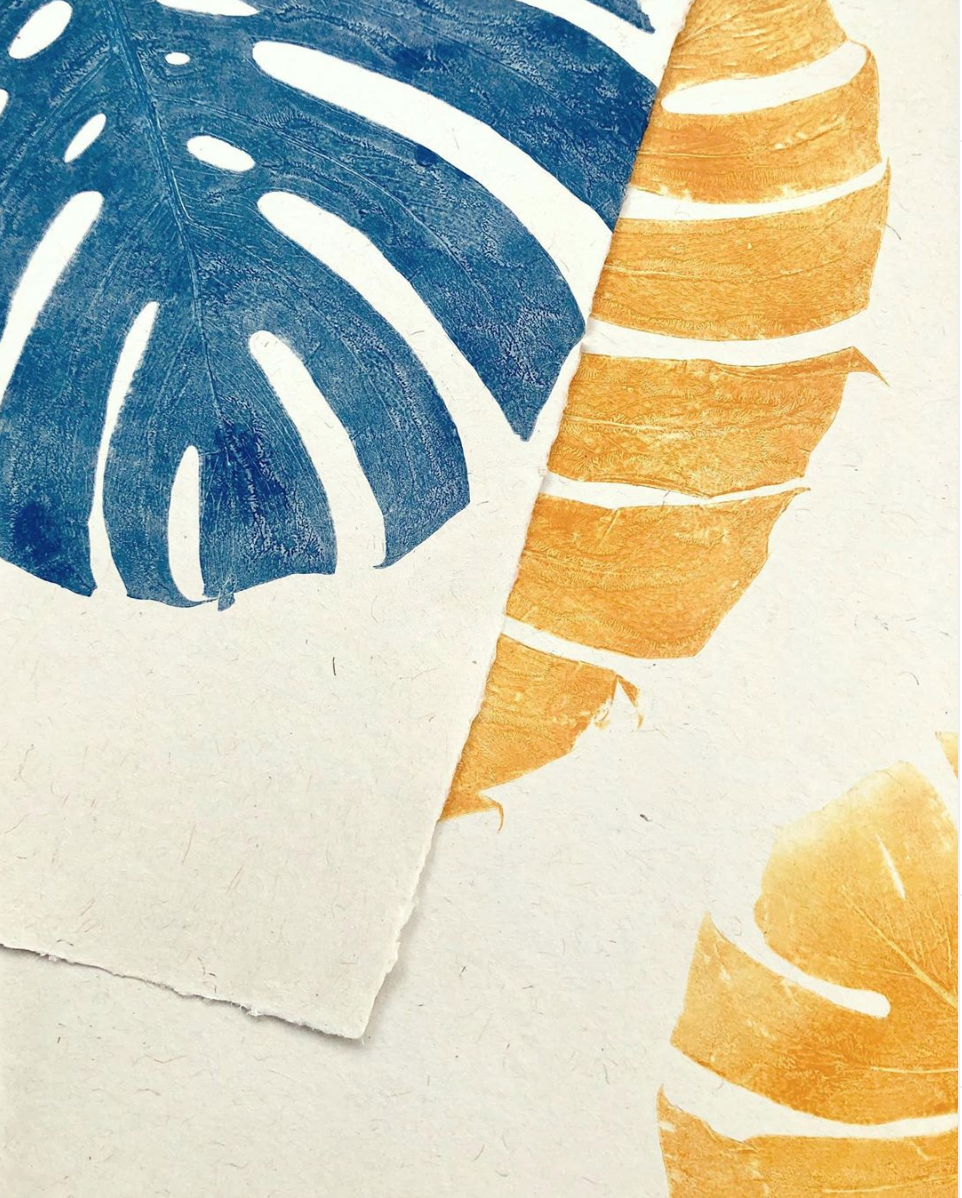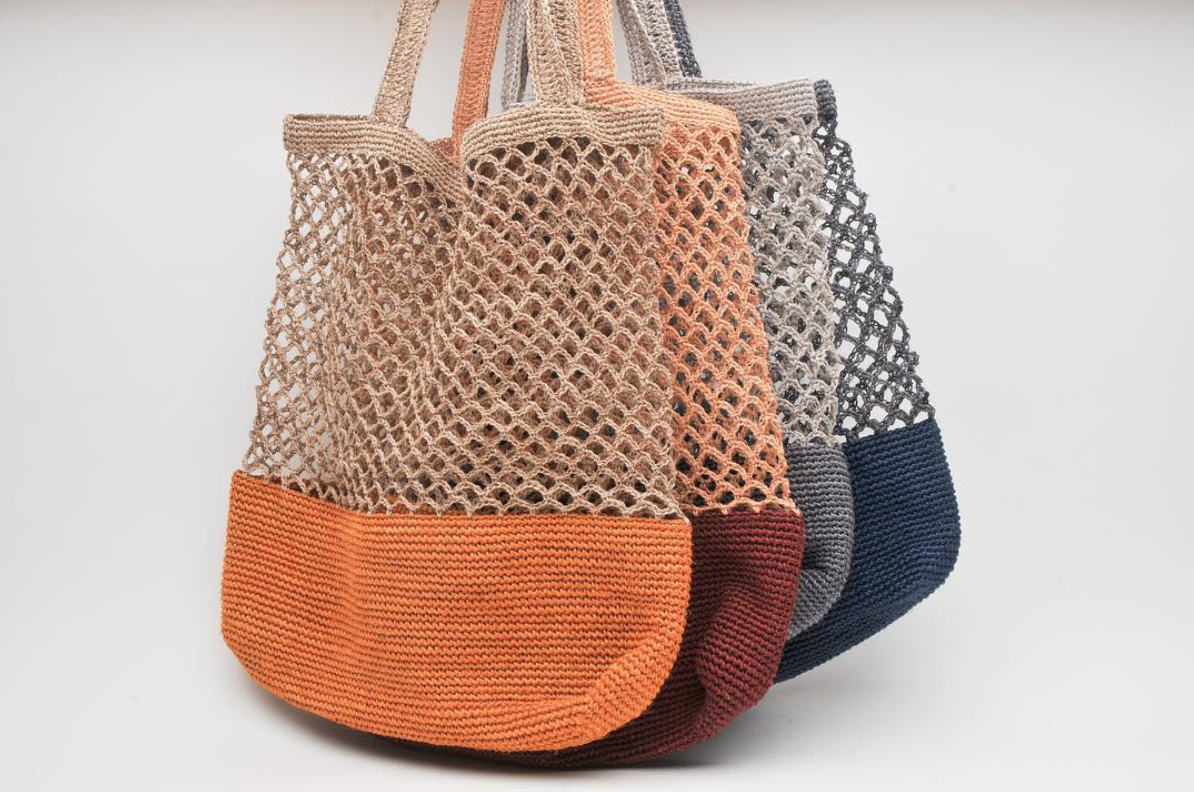Color & Pattern Interview Series: Magda Made
Magda Made
Every time I have traveled to Colombia, it has felt like someone let me in on a really good secret. The first time I arrived to Medellin, layer by layer, as I snaked back and forth through the mountains, the jungle city slowly revealed itself after a 50-minute drive from the airport. With each mile, foreign plant species and trees emerged that I had never seen before. Palm trees swayed. A blanket of mist danced around the piercing sun-rays creating flickering rainbow mirages. Halfway through the journey civilization presented itself as pottery stores lined the side of the road. I had always wanted to stop at those stores, but never had the time as I was traveling for work to give fashion trend presentations. Today the country is bursting with warm hospitality, vibrant colors, and a growing food and design scene.
Fast forward today and two women, Malachi and Shannon, are doing what I had always wanted to do: work with the Colombian artists I would pass by on my work trips. Together they have created a special e-commerce company called Magda Made, named for the Magdalena River, Colombia’s principal river and one of South America’s biggest, often described as the social, environmental, and economic heart of Colombia. Magda Made sells curated products entirely handmade by Colombian artisans working in equitable conditions for fair wages. They work directly with every artisan, and often their families, to understand their production process and determine fair pricing. Through their work and business model, Magda Made is contributing to cultural preservation and economic empowerment of Colombia’s artisan communities.
I suggest following them on their Instagram for a glimpse of their behind-the-scenes adventures around Colombia and the artisans at work.
Below is some insight into their colorful world (plus a region of Colombia I had never heard of):
1. After traveling around Colombia, what has surprised you most about the colors or patterns you have found there? And is there a color or pattern that is currently inspiring you?
The most surprising thing is how none of the patterns are really intentional - the fruit lined up at the stalls, the colorful paint chipping off walls, the insanely lush countryside. It feels like everywhere you look there is something to be inspired by because it is such a huge, diverse country. We both always tend to love yellows and blues. Most of our products are made of natural fibers however and there is so much variation in the color of natural fibers depending on the plant and processes used - its not what you would typically think of as color but we’ve learned to start picking up the differences and seeing them as their own kind of rainbow.
2. What is a favorite technique or skill you have discovered from the artisans you work with? How many artisans are you currently working with?
The many styles of basket weaving with natural fibers is definitely a favorite. There’s so much variation in technique from basket to basket and no two are the same. We are consistently working with ten different artisans/artisan groups but occasionally we’ll do collaborations with other artisans as well.
3. What is an interesting place you have visited or stumbled upon in Colombia?
Most recently we visited a town called Mompox for the first time. It’s hard to get to, about 6 hours drive from Cartagena, and no airport yet so it doesn’t get a lot of visitors, especially foreigners. When Spain still controlled the country it was a city that was used as a hiding place for gold because it was far enough from the coast to be safe from pirates but also located directly on the Magdalena River (our namesake) so easy to access when needed. The Spaniards taught locals a style of jewelry making called filigree which was learned from the Arabs. Mompox is famous today for its filigree jewelry and the town itself is an incredibly preserved, colorful, colonial piece of Colombia.
Magda Made
4. How do colors and patterns factor in your decision making process when sourcing? (For example, are you looking for more neutral colors for the US market or is it personal preferences?)
We definitely have our preferences - Shannon likes softer colors, Malachi likes brighter ones - that we work into our designs but we really try to make sure to pay attention to the colors that our customers are trending towards which is typically more neutral, easy-to-wear colors. We love to play with new combinations though and will get samples made to try fun colors out, even if they don’t end up working it’s nice to get to see your ideas come to reality.
5. What is something that might surprise the reader to know about Magda Made?
It’s just the two of us! And we are completely self-financing, working 3-4 jobs between the two of us aside from Magda Made. We are super passionate and excited about the potential to grow so we are being patient to make sure we really have an identity before taking out any potential loans or seeking out investors. It makes it harder and slower for sure but we are happy with how its worked out thus far.
6. Is there a favorite Colombian product you have sourced or artisan you have worked with?
Shannon: The Liana vine baskets from Mitu, Vaupes, Colombia. Vaupes is a zone primarily covered by dense Amazon jungle and the artisans who make the baskets are from the nomadic, Cubeo indigenous group. They’ve been making the same baskets for generations and use them to carry food and supplies. The sizes and exact weaving style varies between artisans and each basket we receive always has the name of the artisan who wove it.
Malachi: I love the palm prints that we get from the Taller de Papel (paper factory) in Barichara. They make everything on site from growing the plants to harvesting and processing the fibers to pressing the paper and finally, stamping the prints. They employ single mothers who otherwise would have trouble finding work. Its a beautiful place to visit and the prints themselves are gorgeous.
7. What else should the reader know about Magda Made?
We aim to run as a social enterprise in the near future with the majority of our profits being reinvested back into programs to teach new artisans and increase efficiency and profitability for themselves and the community at large.












